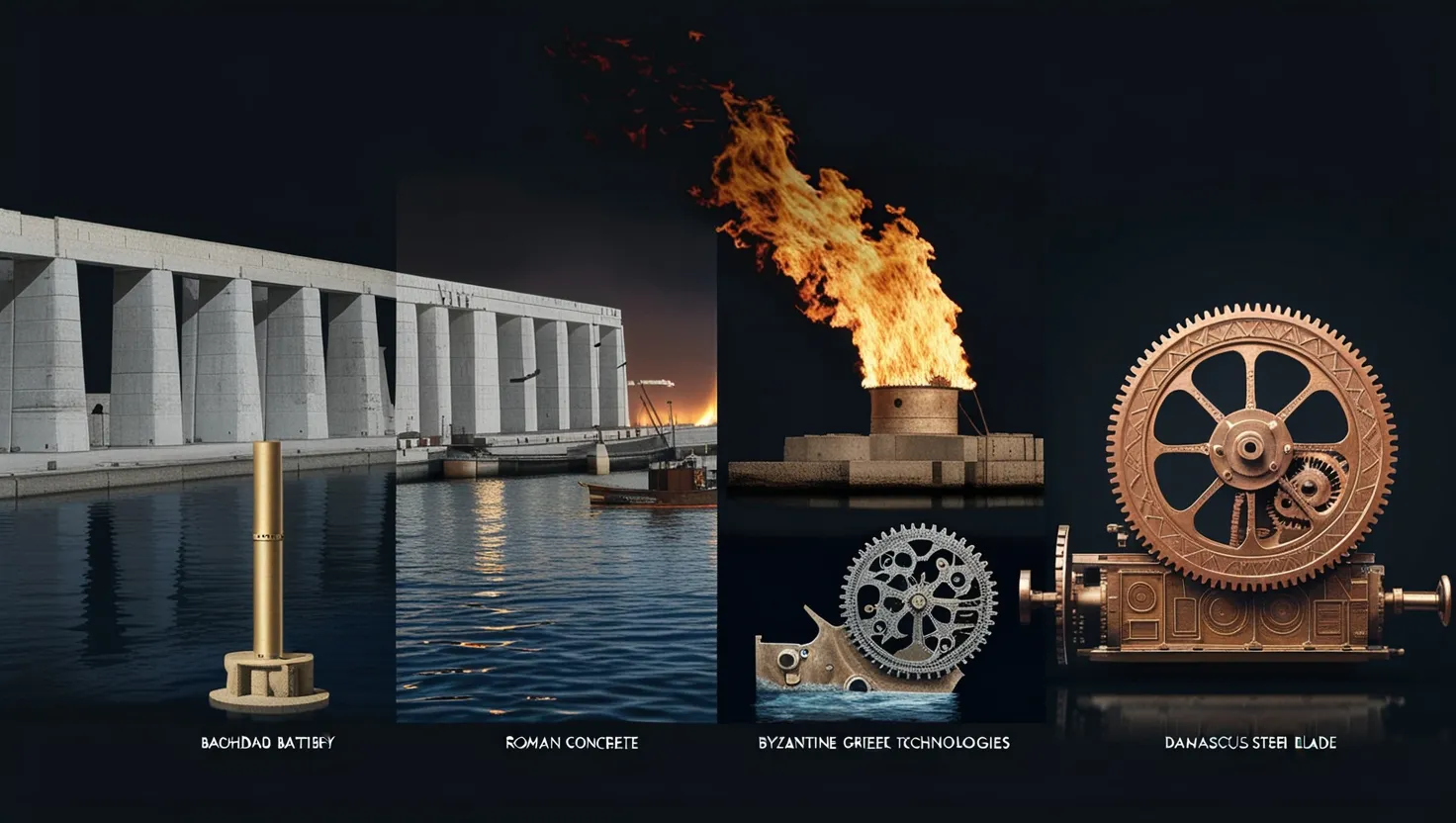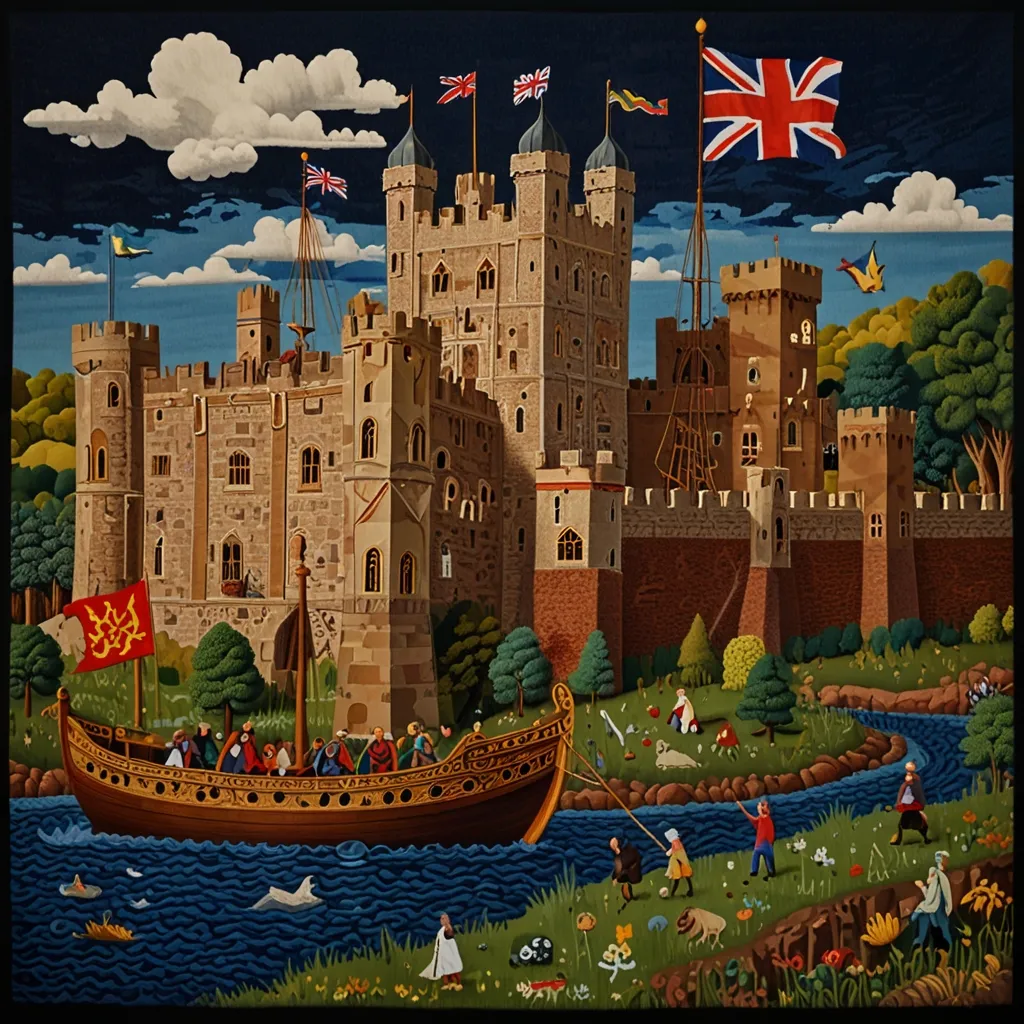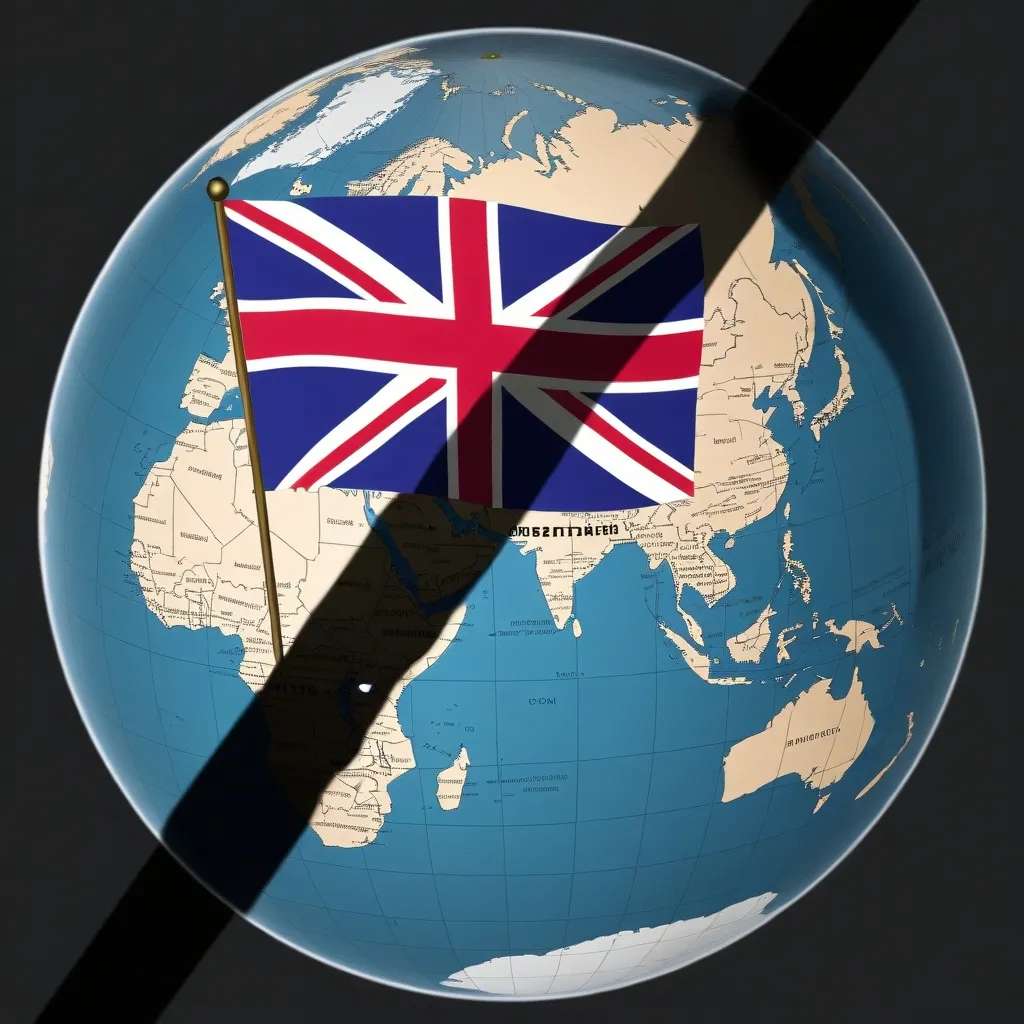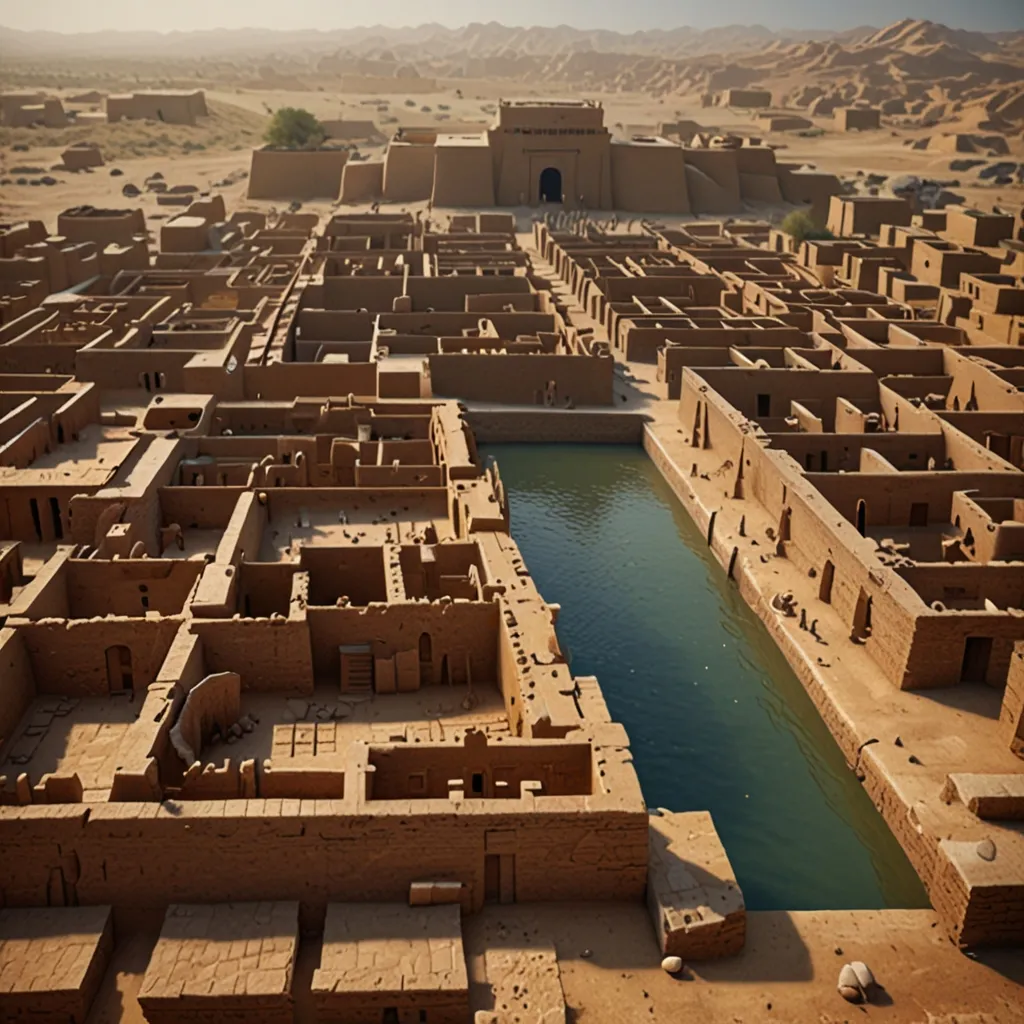When we think of technological progress, it’s easy to imagine a straight path; each discovery building perfectly on the last, each invention marching us further forward. But history is full of reminders that knowledge is fragile, and progress—when we look back—is far from linear. I’m always fascinated by the stories of tools, materials, and devices that vanished from use, sometimes for centuries, only to resurface and astonish us with their ingenuity. Today, I want to share five remarkable examples of forgotten technologies from ancient civilizations. These aren’t just marvels—they’re windows into how human creativity can leap ahead, get lost, and sometimes elude our understanding even now.
Let’s start with something that rewrites the story of science itself: the Baghdad Battery. Discovered in present-day Iraq and dating back over 2,000 years, this clay jar hardly looks like a piece of cutting-edge technology. But take it apart, and you find a copper cylinder and an iron rod suspended inside, with traces of substances like vinegar. Some researchers believe it could generate a modest electric current—a primitive battery. What could ancient people have done with such power? One popular theory is electroplating: coating objects with thin layers of precious metal. This is centuries before the birth of modern chemistry and electricity. Can you imagine the spark of curiosity when someone first realized that a simple combination of metals, acids, and ingenuity could produce this mysterious force? If they did use electricity, it’s a powerful reminder: ideas we think of as “modern” sometimes have very ancient roots.
“Any sufficiently advanced technology is indistinguishable from magic.” — Arthur C. Clarke
Roman concrete is another example where we still find ourselves playing catch-up. Walk along the harbors built by Rome nearly 2,000 years ago and you’ll see something odd: the concrete used then is, in many cases, more durable than the concrete we use today. It resists the relentless battering of the sea almost as if it grows stronger with time. For centuries, after the Western Roman Empire fell, the secret was lost. Medieval builders could only dream of recreating the unyielding harbors and awe-inspiring domes. Their concrete cracked and crumbled where Roman material endured. Only recently have scientists decoded its secret: the Romans mixed volcanic ash and quicklime in a way that creates tiny lime pockets. When cracks form, seawater reacts with these pockets to repair the damage, essentially making the concrete “self-healing.” Isn’t it astonishing to think that some of the most advanced materials we’re tinkering with today were, in a sense, already mastered by Roman engineers? I often wonder what other knowledge—hidden in dusty ruins or crumbled texts—we’ve barely glimpsed.
Why do some inventions vanish? Sometimes it’s political upheaval; other times, the knowledge is guarded as a closely held secret or simply deemed unimportant by those who come later. Greek fire is perhaps the most dramatic lost technology. Developed by the Byzantine Empire, it was a weapon that terrified enemies and protected Constantinople for centuries. Described in texts as a liquid fire that burned even on water and was almost impossible to extinguish, it was deployed from ships and hand-held devices alike. Its exact recipe was a state secret, and not even the passage of time and countless attempts to replicate it have been able to reveal how it worked. Whenever I read about Greek fire, I have to ask: what if this knowledge had never been lost? Would it have changed the course of naval warfare and technology much earlier? Or perhaps some inventions are so dangerous it’s almost a relief they faded into legend.
“In questions of science, the authority of a thousand is not worth the humble reasoning of a single individual.” — Galileo Galilei
The story of Damascus steel is just as legendary, though for very different reasons. For hundreds of years, from the 3rd to the 17th centuries, the finest blades in the world came from the Middle East. They were known not just for their beautiful watery patterns but for their almost magical strength and flexibility. Knights and warriors coveted these swords, as they could reportedly cut through lesser weapons with ease. The secrets were lost when the trade routes supplying the unique ores and knowledge collapsed. Fast-forward to recent decades, and metallurgists examining surviving blades have discovered they contain nanostructures—carbon nanotubes and nanowires—far ahead of what anyone else achieved until very recently. Try to picture a medieval blacksmith unknowingly crafting materials at the nanoscale, something that today would require specialized labs. It challenges our assumptions about the limits and capabilities of ancient artisans. Could there be other lost crafts that, if rediscovered, might push modern science to new heights?
“Those who cannot remember the past are condemned to repeat it.” — George Santayana
Perhaps the most mind-bending forgotten technology is the Antikythera mechanism. When divers found a corroded lump in a shipwreck off a Greek island in 1901, nobody guessed what it would reveal. Cleaned and x-rayed, it turned out to be packed with over thirty finely crafted bronze gears. Scholars eventually realized it was a mechanical device, likely created around 100 BCE, designed to predict the positions of the Sun, Moon, and planets, as well as eclipses and even the dates of the Olympic Games. This analog computer is so sophisticated that nothing of its kind appears again for over a thousand years—not until the intricate mechanical clocks of the Middle Ages. What really gets me is the sheer ambition: here was a team of craftsmen and thinkers who not only envisioned but constructed a complex machine for tracking the heavens. What else did they know? What was the chain of knowledge that allowed this to be built, only to disappear almost without a trace?
If these stories ignite curiosity, you’re not alone. Each example asks us to rethink what’s possible and question how much we really know about history’s “primitive” ages. What other marvels might be waiting in museum basements, unexcavated ruins, or stories dismissed as myth? Technology doesn’t always move forward in a straight line. Wars, plagues, changing empires, and even plain forgetfulness can snuff out knowledge as easily as a gust of wind blows out a candle. We like to think that our era is unique in its innovation, but the relics left by ancient civilizations quietly insist otherwise.
Think for a moment about what it takes for a discovery to survive. It needs a community that values and understands it, the raw materials to keep it alive, and the ability to pass it on—through writing, teaching, or direct experience. Lose any link in that chain, and even groundbreaking inventions can vanish. The Antikythera mechanism, Damascus steel, Roman concrete, Greek fire, the Baghdad Battery—each tells a story not just of brilliance but of fragility.
“To invent, you need a good imagination and a pile of junk.” — Thomas Edison
When we reflect on lost technologies, is it isn’t just nostalgia or historical curiosity—it’s also a quiet warning. The knowledge we take for granted today could just as easily disappear, buried by changing priorities or global upheaval. It makes me wonder: what will future archaeologists or historians find puzzling about our era? What will they struggle to reconstruct? Perhaps the next big scientific leap will come not from new invention, but from rediscovering what our ancestors once built, understood, and then let slip through the cracks of history.
So, the next time you pass a crumbling ruin or read about some ancient artifact, try asking yourself: How much do we really know about what came before? What’s hiding in plain sight? You never know when another forgotten breakthrough will resurface, challenging our ideas of the past and changing our understanding of what humans are truly capable of. Isn’t that possibility worth considering every time we look to the future?






